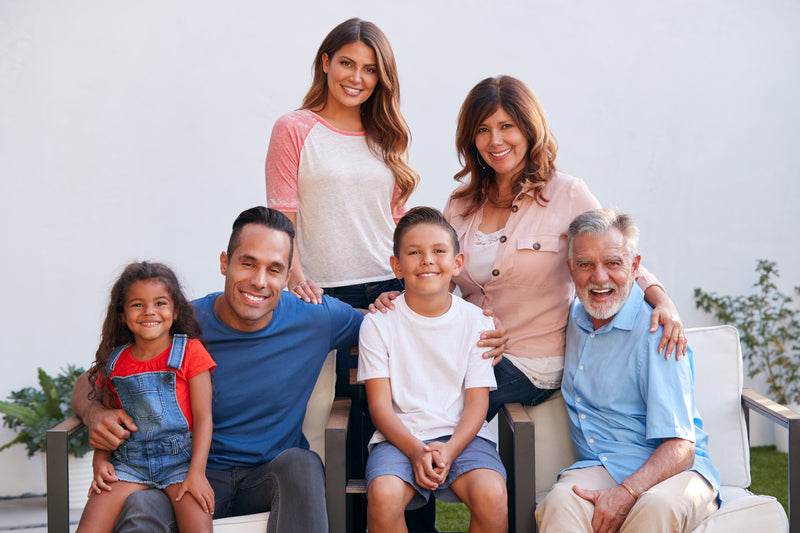Kindness isn’t just something to practice out in the world—it begins at home. In a fast-paced world filled with distractions, the simple act of being kind can easily get overlooked in the day-to-day hustle of family life. But kindness, when nurtured intentionally, can shape a home environment where everyone feels safe, valued, and loved. It builds a foundation of respect that supports healthier communication, deeper relationships, and emotional resilience.
Creating a culture of respect within your family doesn’t require perfection. It’s about consistency, empathy, and modeling the kind of behavior you want to see in one another. Children learn how to interact with the world by watching how their caregivers treat others—and how they are treated in return. That’s why it’s worth the effort to intentionally choose kindness as the baseline for your family dynamic.
It Starts with the Little Things
Kindness is often found in the small, everyday moments: saying “please” and “thank you,” offering to help, or listening without interrupting. These seemingly minor gestures add up, reinforcing the message that everyone’s feelings and contributions matter. When you normalize saying “I appreciate you” or “That was really thoughtful,” you’re setting the tone for a household where kindness is recognized and reciprocated.
Modeling Respectful Communication
Children are incredibly observant, and they tend to mimic adult behavior. How you speak to your partner, how you handle frustration, and how you address mistakes—these are all powerful lessons in emotional maturity. A respectful home doesn’t mean avoiding conflict altogether, but rather navigating it with empathy and understanding. Phrases like “I hear you,” “Can we talk about this calmly?” or “I’m sorry, I was wrong,” are building blocks for honest, respectful communication.
Creating Space for Everyone’s Voice
A respectful household is one where everyone, regardless of age, feels heard. Invite your kids into conversations about family decisions when appropriate. Let them voice opinions, even if they differ from your own. This helps them feel valued and teaches them how to listen and express themselves respectfully. It also encourages a collaborative environment where compromise and understanding come more naturally.
Kindness Includes Boundaries
Being kind doesn’t mean saying yes to everything or avoiding hard conversations. True kindness includes clear boundaries that protect your energy, emotions, and time. Teaching children that it’s okay to say “no” respectfully is just as important as teaching them to be generous and helpful. It shows them that kindness and self-respect are not opposites—they go hand in hand.
Praise the Behavior You Want to See
When you catch your child doing something kind—sharing, comforting a sibling, or helping without being asked—call it out. Not in a performative way, but with genuine recognition. “That was really kind of you,” or “I noticed you helped your brother—that meant a lot.” This kind of praise reinforces that kindness is not just expected, but valued.
Rituals of Kindness
You can also build small rituals around kindness. A “kindness jar,” where family members can drop in notes of appreciation or recognition. A weekly family check-in where everyone shares one thing they’re grateful for and one thing they’re proud of. Even a shared chore, done together with music or laughter, can become a bonding moment when approached with a spirit of teamwork rather than obligation.
Repairing After Mistakes
In any home, there will be tough days. Voices will rise, tempers will flare, and mistakes will happen. But that’s where kindness matters most. When apologies are offered sincerely and accepted with grace, children learn that being kind doesn’t mean being perfect—it means owning our actions and showing up with humility and care.
Kindness as a Family Value
Kindness doesn’t have to be abstract. Make it a stated value in your home. Write it on a whiteboard. Talk about it over dinner. Let it be part of how you define yourselves. “In our family, we treat each other with respect.” “In our home, we speak kindly even when we’re upset.” When children hear these values consistently and see them lived out, they begin to internalize them as part of who they are.
—
A home built on kindness is not just quieter or more peaceful—it’s more resilient. It teaches children how to express emotions in healthy ways, how to repair and forgive, and how to advocate for themselves and others with compassion. It gives everyone in the family the emotional safety they need to grow and thrive.
And the beautiful part? That kindness doesn’t stop at the front door. Children who grow up in a respectful, loving home are more likely to carry those values into their classrooms, friendships, workplaces, and eventually their own families. So by cultivating kindness at home, you're not just shaping your household—you’re shaping a kinder future, one respectful word and one loving act at a time.

